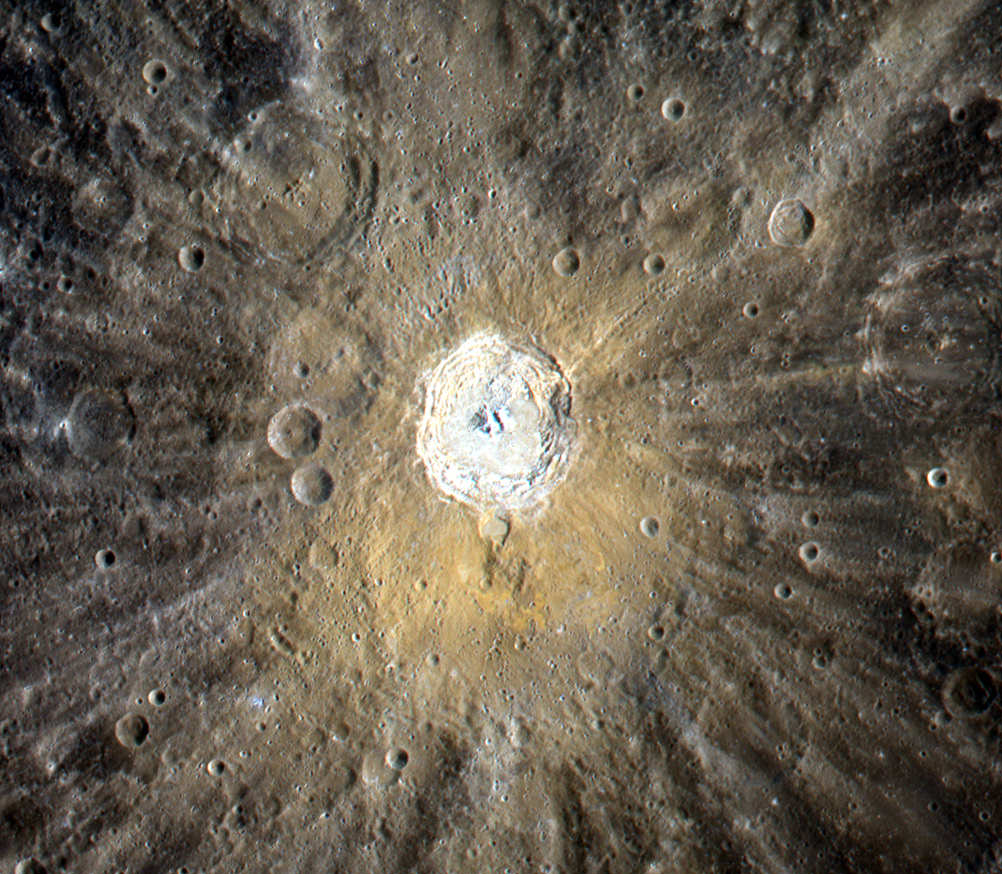[/caption]
The pale-orange coloration around the 39-mile (62-km) -wide Kuiper crater on Mercury is evident in this image, a color composition made from targeted images acquired by NASA’s MESSENGER spacecraft on September 2, 2011.
The color may be due to compositional differences in the material that was ejected during the impact that formed the crater.
Kuiper crater is named after Gerard Kuiper, a Dutch-American astronomer who was a member of the Mariner 10 team. He is regarded by many as the father of modern planetary science.
“Kuiper studied the planets… at a time when they were scarcely of interest to other astronomers. But with new telescopes and instrumentation, he showed that there were great things to discover, which is as true today as it was then.”
– Dr. Bill McKinnon, Professor of Planetary Sciences at Washington University in St. Louis
Airless worlds like Mercury are constantly bombarded with micrometeoroids and charged solar particles in an effect known as “space weathering”. Craters with bright rays — like Kuiper — are thought to be relatively young because they have had less exposure to space weathering than craters without such rays.
See the original image release on the MESSENGER site here.
Image credit: NASA/Johns Hopkins University Applied Physics Laboratory/Carnegie Institution of Washington

